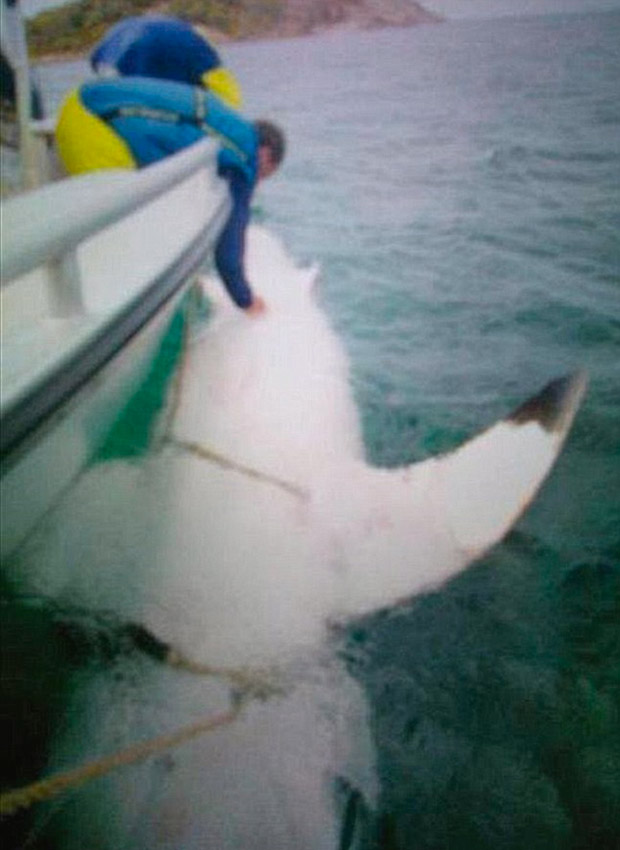
The massively plump predator, estimated to measure at least 16 feet and weigh 1.6 tons, was captured on March 30 off King George Sound, and fitted with an internal tag in a process biologists described as groundbreaking.
But the photo atop this post, revealing the incredible girth of the shark as it was turned over for the tagging process, was released Tuesday. That sent websites scrambling to post the photo and update the story.
The female shark’s nickname: Joan of Shark.
Joan is among many sharks that are tagged as part of an alternative to culling, to let biologists know their whereabouts, in part so swimmers and surfers can be warned.
Since Joan was tagged she has been detected near Albany beaches several times, including nine times last Saturday. (Albany is in the extreme south of Western Australia, and is not in the region in which culling is occurring.)
Joan is among several sharks that were drawn last weekend to a whale carcass that ultimately washed onto the beach. Middleton Beach had to be closed during one of Joan’s close approaches.
Biologists, meanwhile, remain optimistic that they will be able to keep tabs on the great white’s movements for up to 10 years, thanks to an acoustic tag that was surgically inserted during an ambitious and precarious day of work.
Mark Kleeman, project manager for the Shark Monitoring Network, said that tagging a shark of this size, in this manner, is almost unprecedented.
“This is very exciting and potentially a world first,” Kleeman told the Newcastle Herald. “Lots of juveniles get tagged, but to have a fully mature female and get 10 years of data out of it is a big thing for us.” (Internal tags are more secure and, thus, longer-lasting than external tags.)
Joan, which had been externally tagged a week earlier after it had approached a Fisheries department vessel near Limestone Head, was hooked on March 30 in shallow water near Mistaken Island.
To insert the internal tag, biologists used heavy ropes to stabilize the predator, and to roll her upside down in the water. Once the shark was turned over, she entered a state of “tonic immobility” and remained stationary.
That process took more than two hours. Inserting the tag, via small incision, required only five minutes.
Joan becomes one of about 340 tagged sharks of various species in Australian waters, and by far the largest. Five great whites have been tagged off Albany during the past year.
“We are excited by the potential of what this shark can give us,” Kleeman said. “We will be able to see where it is traveling and how often. Over time we will be able to build the data and then we can see if there are any pasterns forming, which is a great start for understanding more about them.”
Best of all, for swimmers and surfers, is that Joan will announce her presence each time she approaches a popular area beach.
As for the shark-culling program, Fisheries Minister Ken Baston told ABC News that it will not be expanded to the Albany area despite the presence of Joan.
“At this stage we’re certainly not looking at anywhere else,” Baston said.



